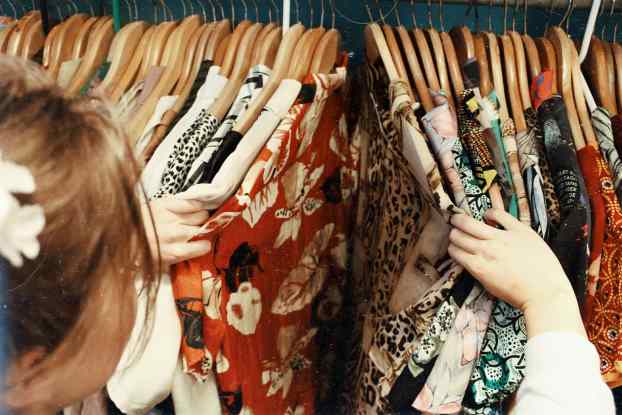Think of a world where fashion isn’t just about looking nice; it’s about feeling great, making a statement, and being environmentally responsible. Over the past few years, we’ve seen the fashion industry change, all thanks to the rise of sustainable consumerism and eco-friendly practices.
In this article, we’ll take you on a journey from thrift stores to runways, showing how secondhand shopping can change the fashion world by making it more sustainable and less wasteful.
Benefits of Secondhand Shopping
Secondhand shopping presents several advantages. It not only reduces waste but also allows individuals to find unique, vintage, and designer items at affordable prices. It’s a win-win for fashion enthusiasts and the environment.
Here’s a more in-depth look at its benefits:
-
-
- Reducing Waste
-
The fashion industry is notorious for its environmental impact, but secondhand shopping offers a sustainable solution. By extending the lifespan of clothing items, it reduces the demand for new production and minimizes textile waste. Sustainable consumerism, at its core, is all about making a difference through individual choices, and choosing secondhand is a step in the right direction.
-
-
- Saving Money
-
Secondhand shopping helps you save money while still getting good stuff. Sustainable fashion often carries a higher price, but thrift stores offer an economical route to acquiring high-quality clothing. Embracing sustainable consumerism isn’t synonymous with extravagant spending; rather, it’s about making better and smarter choices.
-
-
- Finding Unique Pieces
-
Secondhand shopping is your personal treasure hunt, revealing unique pieces that are rarely seen in mainstream retail stores. Sustainable fashion is all about celebrating your one-of-a-kind style, and curating a wardrobe with these exceptional discoveries is the perfect way to do that.
-
-
- Supporting Local Communities
-
Secondhand shopping has a more significant impact than you might think. By choosing thrift stores over fast fashion chains, you’re supporting local economies and contributing to the welfare of marginalized communities.

Photo by Becca McHaffie on Unsplash
Tips for Successful Secondhand Shopping
Just starting your thrift shopping journey? Take a look at our tips for an awesome thrift experience!
- Know What You’re Looking For: Secondhand shopping can be confusing, so it’s important to know what you’re looking for. Are you after casual clothes, cool vintage stuff, or office attire? Deciding on your goal will help you shop with confidence.
- Inspect the Quality: Sustainable consumerism also means being mindful of the quality of items. Before making a purchase, examine the clothing for any damage or signs of wear. Remember that the goal is to own sustainable pieces that will last.
- Get Creative with Styling: The fun part of secondhand shopping is that you can put together unique pieces to make your own style. Sustainable fashion is about being eco-friendly and letting your creative side shine.
- Be Patient: Thrift stores always have new stuff coming in, so it’s a good idea to stop by often. You never know when you might find something really cool. And don’t forget to ask about discounts and sales—they’re a great way to save on your sustainable fashion finds.
- Bring Cash and Reusable Bags: Some thrift stores only accept cash, so it’s a good idea to have some on hand to avoid disappointment. Bring your reusable bags to reduce plastic waste.
- Know Your Sizes: Vintage clothing sizes vary widely, so it’s crucial to know your measurements or have a measuring tape to avoid size-related disappointments.
- DIY Potential: Embrace items with DIY potential. An oversized sweater can transform into a trendy crop top with creativity and basic sewing skills.
- Join Online Thrifting Communities: Online platforms and social media serve as vibrant hubs for thriving thrifting communities. Joining these communities opens up a world of inspiration, expert tips, and a profound sense of camaraderie.
Challenges and Misconceptions
Despite the numerous benefits of thrift shopping, there are still lingering stigmas associated with wearing used clothing. These misconceptions can deter some individuals from embracing sustainable fashion. Here’s how to overcome these stigmas and fully enjoy the world of thrift shopping:
- Quality and Cleanliness: Some people believe that thrifted items are of low quality or unclean. To overcome this stigma, remind yourself that many thrift stores carefully curate their inventory, offering gently used, well-maintained clothing. Washing or dry-cleaning your thrifted finds can also ensure they are fresh and clean.
- Outdated Fashion: The misconception that thrift stores only carry outdated fashion is a common stigma. In reality, thrift stores often feature unique and timeless pieces that can be incorporated into modern outfits. Embrace the idea of mixing vintage and contemporary styles to create a personal and distinctive look.
- Social Perception: Fear of judgment from others is a significant barrier to thrift shopping. To overcome this, recognize that sustainable fashion is gaining popularity and is often celebrated. Be proud of your eco-friendly choices and confident in your personal style.
Conclusion
In a world where sustainable shopping is becoming more popular, secondhand shopping is a great way to help the environment and find unique, affordable fashion. When you choose thrift stores over fast fashion, you’re not only reducing waste but also helping local communities and supporting eco-friendly practices.
So, join the movement and let your fashion choices reflect your commitment to a greener, more stylish world.
For more insightful articles, check out Shamskm today!
